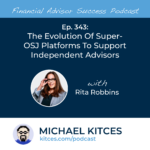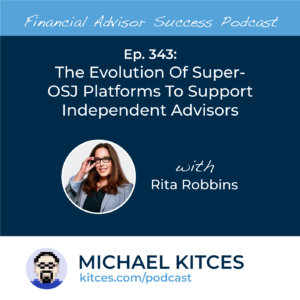While many financial advisory firm owners have long-term goals that involve building a career based in a profitable and sustainable advisory firm, there are some firm owners who develop their firm as a means to explore and pursue other business endeavors. These firm owners may opt to take a backseat role in running the firm, yet must still entrust client relationships and firm management to their advisors and support team. And while it is already challenging for firm owners to develop an advisory business that is both profitable and sustainable, it can be even more challenging to do so when the firm owner is not actively engaged in operating the firm.
In our 117th episode of Kitces & Carl, Michael Kitces and client communication expert Carl Richards consider how advisory firm owners might approach building internal structures in their firm so that they can eventually step away from an active role and rely on others to sustain the firm's viability.
For business owners who choose to build a financial advisory firm without the intention of assuming a central role in its daily management and development activities, establishing long-term values and organic growth strategies with a central focus on client retention and satisfaction is one way to ensure that the business will remain viable. And without the owner taking an active role in managing client relationships or creating business development opportunities themselves, it is important that other advisors and/or support staff are capable of and motivated to prioritize client service and efficient operation of the firm. Which means that a key part of the process is finding and retaining employees with a strong mix of client-centric service and business development abilities, who have the right set of strengths and skills that will allow them to uphold the firm’s values.
At the same time, giving employees the opportunity to advance and grow with the firm over the long term (e.g., through training and development opportunities and even potential equity ownership), will increase the probability that the firm will sustain and grow over time. Because with no process in place to ensure team members feel valued and have a growing role in the company (either through responsibility, compensation, or both), cultivating an environment for a successful business that supports organic growth would be very challenging, if even possible at all.
Ultimately, the key point is that building a sustainable advisory firm for an owner who chooses not to play a key role in the firm's operation depends heavily on finding the right resources to maintain business development and client service in ways that align with the firm owner's goals, while providing meaningful career development opportunities for team members to support the health and profitability of the firm. And by encouraging a client-centric culture and providing advancement opportunities for employees, advisory firms can create an environment where both clients and team members thrive – and where owners have the opportunity to pursue other endeavors, with the confidence that their advisory firm is on track for long-term success!








